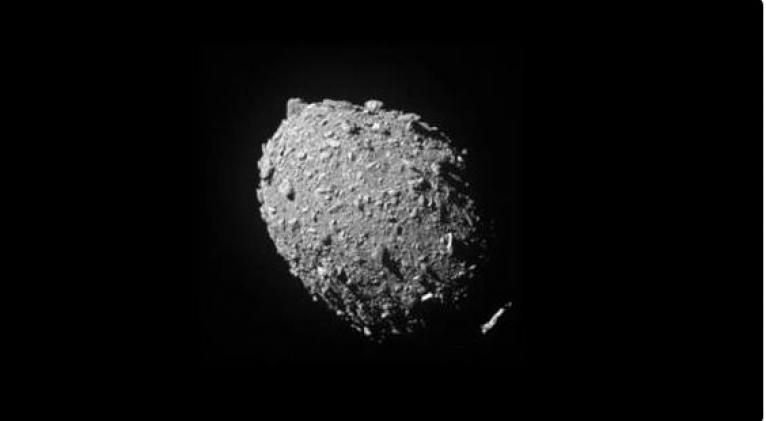
The U.S., 7 Sep.- The Dart mission diverted the orbit of an asteroid, in what was a first planetary defense test. The result of the impact could be seen from Earth in the form of star rain, although in the case of a few years to be expected.
Small and non-dangerous remains from the Dimorphos asteroid, after the impact that shortened orbit around its main asteroid Didymos by more than half an hour, can reach Mars and Earth.
If this happens and they are of sufficient size, "we will witness the first meteor shower caused by humans," said Milan Polytechnic researcher Eloy Peña-Asensio, one of the signatories of a study accepted for publication in The Planetary Science Journal, according to the European Space Agency (ESA) in a statement.
NASA's DART probe deliberately crashed, in 2022, against Dimorphos (151 meters in diameter) to test whether the kinetic impactor technique could serve to divert an asteroid, if it took a day to protect Earth.
DART's impact caused the small asteroid to change its shape and throw a plume of debris. A team of researchers has modeled the possible directions of these meterids thrown into space.
What happened with Dimorphos during and after the impact of the probe was observed from Earth and by the nanosatellite LICIACube, near the site of the impact. All the data has served to do simulations.
The equipment simulated the eecta of material to coincide with LICIACube' observations using three million particles grouped into three sizes: 10 centimeters and 0.5 centimeters and 30 thousandths of millimeter, which move at speeds of 1 to 1,000 meters per second or up to 2 kilometers per second.
Peña-Asensio, lead author of the study, said they have identified "exction orbits compatible with the delivery of meteorite-producing particles to both Mars and Earth."
The results indicate the possibility that these small remains will reach the gravitational field of Mars in 13 years, in the case of those that were launched around 450 meters per second; those that reached 770 meters per second could reach its vicinity in seven years.
The particles moving more than 1.5 kilometers per second "could reach the Earth-moon system within a similar time frame," said the Spanish scientist.
In the coming decades, meteorite observation campaigns will be "crucial to determine whether the fragments of Dimorphos, resulting from the DART impact, will reach our planet."
The team was surprised to discover that "it is possible that some centimetric-sized particles will reach the Earth-moon system and produce a new meteor shower," said study signatory Josep Maria Trigo-Rodríguez, astrophysicist at the CSIC Institute of Space Sciences and the Institute of Space Studies of Catalonia (IEEC).
The largest of these meteoroids would only be the size of a softball and burned in the Earth's atmosphere, although they could cross the atmosphere of Mars, which is thinner.
In any case, it seems likely that only the smaller particles will reach Earth, as they are the ones that would have been thrown at the highest speed.
At the moment, it is not possible to determine whether they will be large enough to produce observable meteors, the ESA statement adds.
That meteoroids head toward Earth or Mars will depend on their position on the cone-shaped impact plume: The material on the north side is more likely to head towards Mars, while the one in the southwest has more likely to reach Earth.
More than 1,000 meteoroid currents across Earth's orbit are known, linked to famous annual meteor showers such as the recent Perseids and Autumn Triads.
The new study will be published a few weeks after the launch, scheduled for October, of the Hera mission from ESA to Dimorphos.
The probe will conduct an "impact scene investigation" from very close range, collecting data on the mass, structure and composition of the asteroid to turn this planetary defense method by kinetic impact into a well-understood and repeatable technique, said study signatory Michael Kupeppers. (Text and Photo: PL)